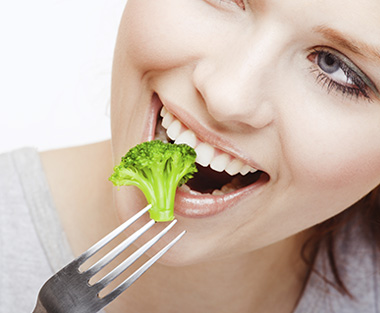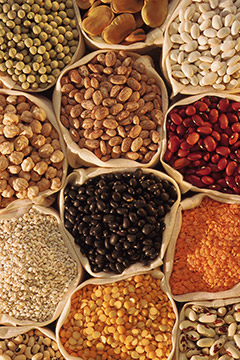 Almost everyone knows that calcium “does a body good” – it’s a key nutrient for strong bones, teeth and general health. In fact, it’s the most abundant mineral in the body.
Almost everyone knows that calcium “does a body good” – it’s a key nutrient for strong bones, teeth and general health. In fact, it’s the most abundant mineral in the body.
But even if you’re all for getting enough calcium into your diet, it can be tricky if you don’t drink milk. Fortunately, there are many other sources of calcium besides dairy.
Non-milk-based and non-dairy foods provide calcium from the plant world, and even from the sea. Great news for those who are lactose intolerant, vegan, or simply choosing not to take in dairy foods.
A Mineral for Every Body
Calcium performs a variety of functions in the body. Most of them involve your skeletal system (bones). Healthy bones and teeth not only contribute to functional physical health and wellness, they also store 99% of the body’s calcium.
Cell communication is another important function of calcium—the remaining 1% of the mineral in your body is found in blood cells and tissue cells, where it is an essential component of metabolic regulation.
Most teens and adults are recommended to get between 1000 and 1500 milligrams of calcium each day.
Milking Veggies for Calcium
It might be surprising to learn that some vegetables, especially leafy greens, provide significant amounts of calcium. ½ cup of cooked kale is an excellent source, and the same amount of bok choy is even more calcium-rich. Collard and turnip greens, spinach, and broccoli, also provide calcium.
However, it’s important to note that some of these otherwise super-healthy super foods contain oxalic acid, from oxalates, which can decrease the absorption of the calcium they bring with them. By the way, the majority of kidney stones are formed from these same components, so if you’re prone, be sure to take note. A couple of extra steps can minimize the calcium losses in certain foods.
Spinach and collard greens are particularly notable for their oxalic acid component, but interestingly, cooking them seems to increase the availability of calcium (by reducing the sticking power of the oxalates). So to up the impact on your calcium status with green veggies, give them a steam or stir fry. Another way to offset oxalic acid is fermentation: if you pickle Brussels sprouts, for example, you’ll have access to more calcium than eating them raw or steamed.

Nuts, Grains & Legumes: Pros & Cons
We know that fiber is a big contribution of grains, nuts and seeds in the diet, but we don’t often think about getting our calcium from these foods.
Black-eyed peas and soybeans are good sources from the legume family, and chickpeas and navy beans provide among the highest calcium concentrations of beans. Although, like some leafy greens, some legumes contain oxalates, which interfere with calcium absorption. Some also contain phytates which negatively affect calcium status, too. But phytate levels can be reduced by:
1. Pre-soaking beans for several hours
2. Discarding soaking water, and
3. Cooking soaked beans in fresh water
Of the list of commonly eaten nuts, almonds, hazelnuts and Brazil nuts rank the highest in terms of calcium. For seeds, sesame in the form of sesame butter is one of the highest calcium content foods with 126 milligrams in a 2 tablespoon serving.
Some grains, especially in the form of flours, deliver higher calcium levels than others. Amaranth, carob flour, chickpea flour and quinoa flour all contribute this important mineral. In contrast, wheat bran contains phytates, which inhibit absorption. Therefore, avoid eating wheat bran with calcium-rich foods.
Processed breads and flours are often “enriched” with calcium. This is a viable source of calcium in the diet; however packaged breads and flours may contain a long list of less than healthy ingredients, so use moderation when choosing these.
From the Sea to the Store
One way to increase calcium without using dairy is to simply add calcium-fortified foods to your diet. Look for orange juice, soy or almond milk, and breads and cereals, with added calcium. 250 – 300 extra mg of calcium may be available in your servings of calcium enriched cereal, juices and non-dairy milks.
Finally, an unexpected source of calcium at notably high levels can be found in the sea—namely, small fish with tiny bones, such as sardines, and mackerel. Even canned salmon provides a good source, as do a few of the sea vegetables popular in some ethnic cuisines. Look for kombu, which is edible sea kelp, and nori, seaweed often found in the form of wrappers for sushi rolls.


